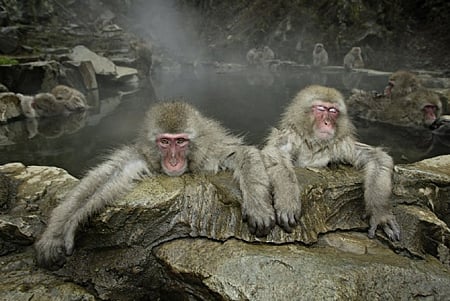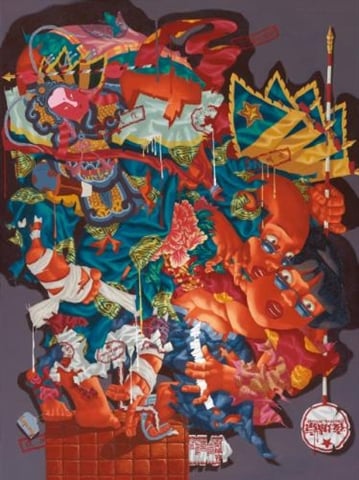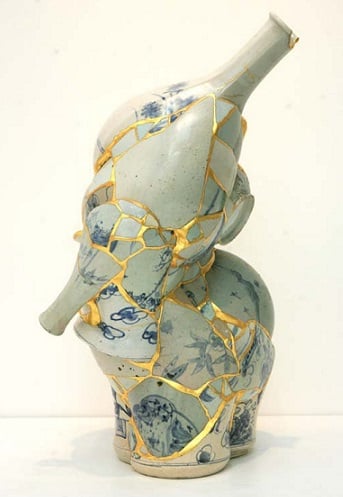Auctions
Navigating New Waters: Understanding the Emerging Asian Art Market
Emerging Asian art is making waves with collectors, curators, and critics.

Emerging Asian art is making waves with collectors, curators, and critics.

Heather Russell

The emerging Asian art market has never been more exciting and fluid. A great number of new Chinese, Japanese, Korean, and South-East Asian artists are appearing in galleries, art fairs, and auctions. Many works by emerging Asian artists appeal visually to the Western eye and also represent pockets of value in the Contemporary Art market, as their work tends to be priced lower than established blue chip Contemporary Asian Art. The term “emerging” when applied to Asian artists typically refers to artists born after 1980. In the case of the Western market, it is important to include under the umbrella of “emerging,” those Asian artists born before 1980 who are well-known in the East with established auction records, museum, and gallery exhibitions, but are being newly introduced to the Western audience.
Both new and established collectors are often uncertain on how to navigate through these unfamiliar works. The Internet has provided access to helpful tools that empower collectors to learn more about specific emerging Asian artists before they acquire a work.
The first of several ways to learn more about an emerging Asian artist is by reviewing their international auction results which can be found using the artnet Price Database. If the artist has positive auction results in Asia, this helps confirm that among the savvy Eastern collectors, that this artist is one that is being sought after at both primary and secondary markets. For example, the figurative paintings of Contemporary Chinese artist, Lu Peng (Chinese, b.1967), sell at auction houses across mainland China and Hong Kong, typically over estimate, yet his works are virtually unknown to Western buyers. Not only are his works visually striking, but they also have a record of increasing in value and investment as his auction records reflect. One of Lu’s paintings, Capital Night (2001), sold at Sotheby’s Hong Kong April 2013, for US$13,682 (106,250 HKD) premium against an estimate of US$6,438–9,014 (50,000–70,000 HKD).

Lu Peng, Capital Night, 2001, oil on canvas, sold for US$13,682 at Sotheby’s Hong Kong
However, many emerging Asian artists are without auction records due to their young age and rapid acceleration on the primary market. In this case, it is important to review the artist’s biography and statement, in addition to their exhibition history. Press releases and reviews can also become a valuable tool when exploring the dynamic market of these artists. For example, Korean artist, Yee Sookyung (Korean, b.1963), was one of the highlights of the prestigious 2013 Art Basel: Hong Kong Art Fair held in May, with attendees scrambling to take photographs of her unique vases made from discarded ceramic shards, epoxy, and 24 karat gold, that sold out instantly. Her work has been exhibited in major public and private collections, and has been the subject of important shows in museums, galleries and biennales, in addition to obtaining top international gallery representation. Despite the fact that the artist has only come to auction twice in 2011, she is positioned as one of the most exciting artists coming out of Korea today.

Yee Sookyung, Translated Vase, 2008
The most exciting aspect of the emerging Asian art market is that there are many works that do represent pockets of value, due to the young age and early exhibition history of the artists. For example, the stunning large-scale wildlife photographs by exciting Japanese artist Takayuki Maekawa (Japanese, b.1969), are some of the most visually arresting images taken by any photographer worldwide. The artist has been shown in top museum and gallery shows in Japan. However, his Western appeal was recently awarded with the 2013 Grand Prize in the first Nikkei National Geographic photo prize. Most recently in June 2013, his first U.S. exhibition was held at Steven Kasher Gallery, New York, NY, which was met with acclaim by both collectors and critics alike. His photographs represent a great pocket of value at affordable price points, simply because he is new to the Western market.

Maekawa, Japanese Monkey, Jigokundani, Japan, 2003, Steven Kasher Gallery, New York, NY
The emerging Asian market is not one to avoid but to embrace. The wonderfully varied type of work offers something for everyone, in all media and at all price points. Simply put, collectors should buy what they love but they should make sure to do their homework first!